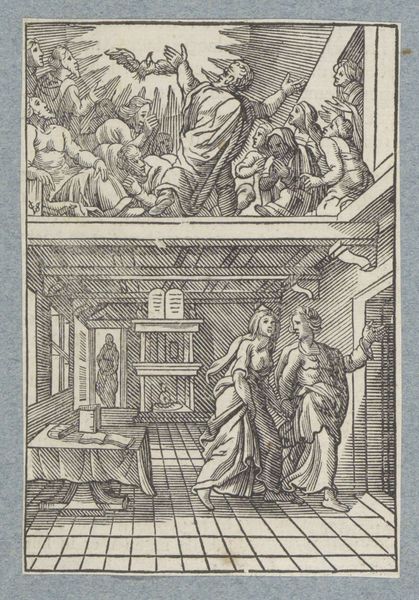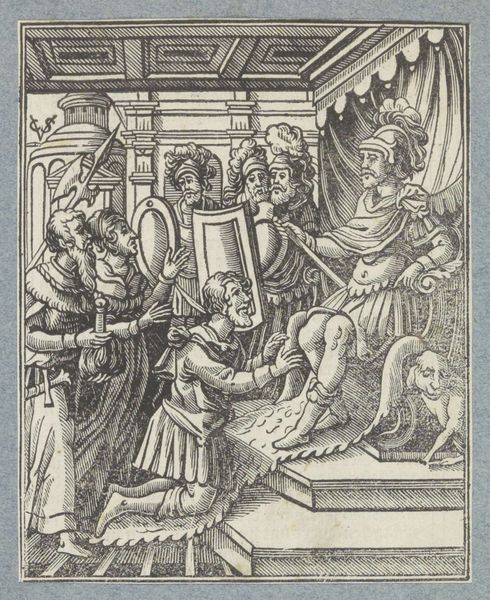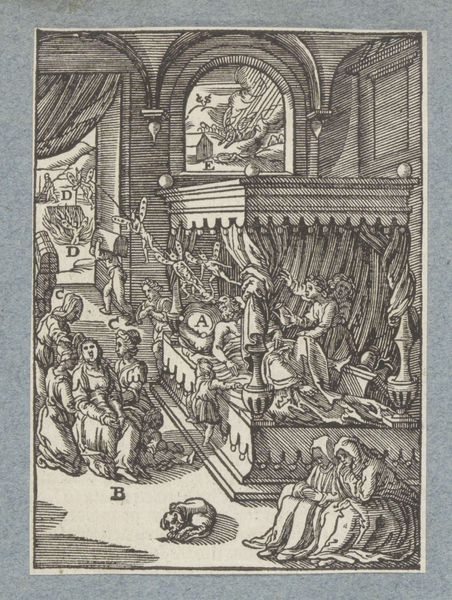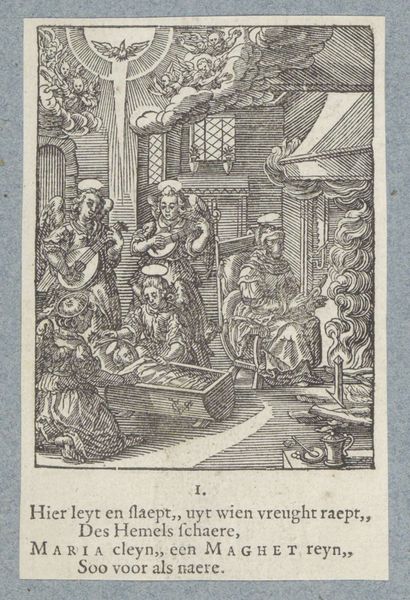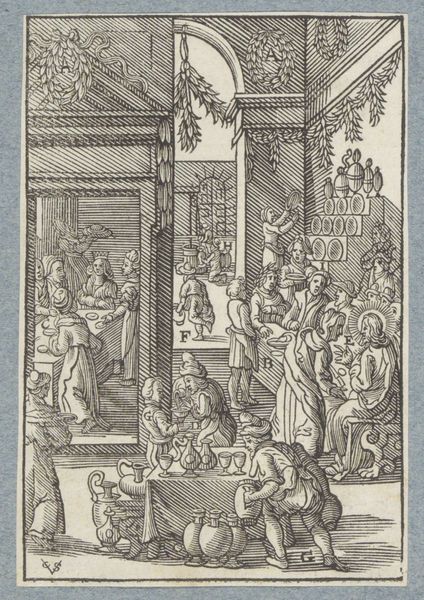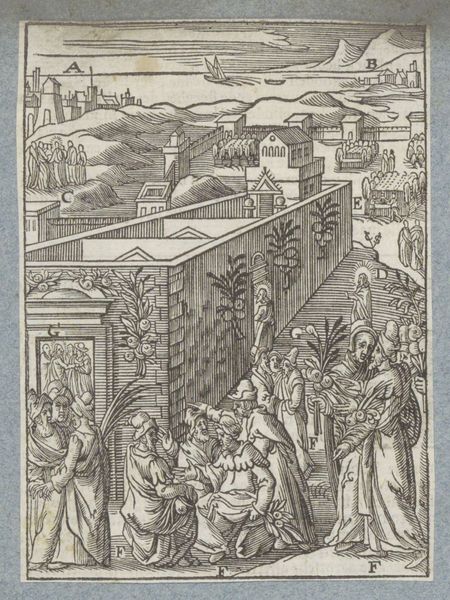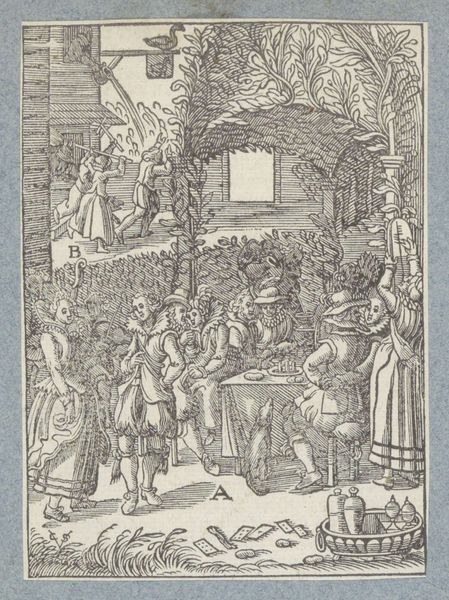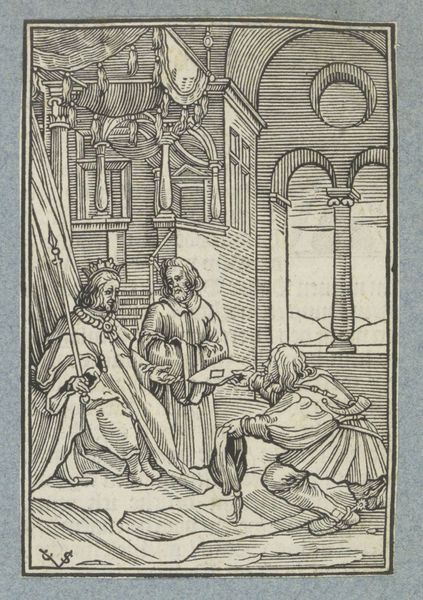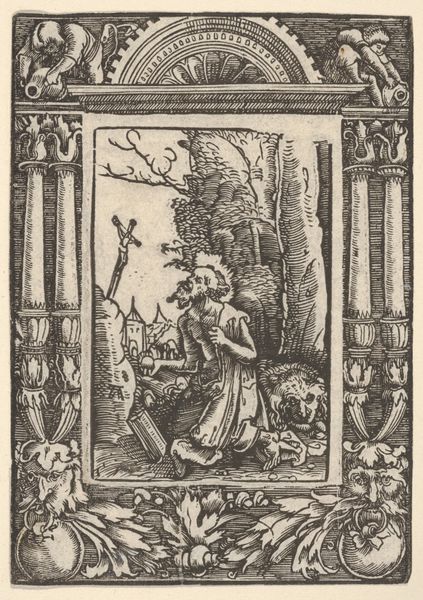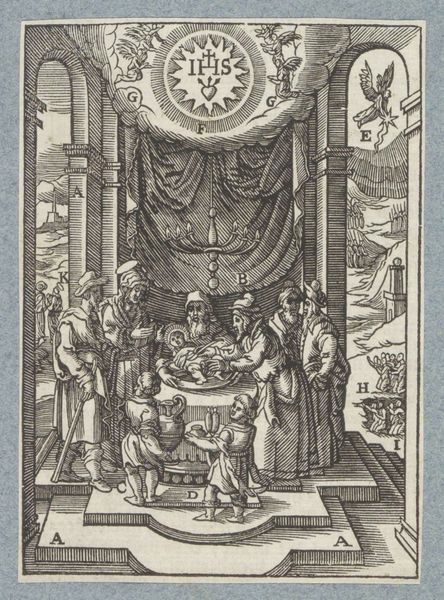
print, woodcut, engraving
#
narrative-art
#
baroque
# print
#
pen illustration
#
pen sketch
#
figuration
#
woodcut
#
history-painting
#
engraving
Dimensions: height 110 mm, width 80 mm
Copyright: Rijks Museum: Open Domain
Curator: Christoffel van Sichem the Younger created this striking woodcut between 1645 and 1646, a piece entitled “Ester beschuldigt Haman tijdens de maaltijd,” currently held in the Rijksmuseum collection. Editor: It's predominantly stark black lines defining every form, every shadow. It creates this feeling of intense drama. Curator: Absolutely, it's illustrating a pivotal scene from the Book of Esther. We're witnessing Esther accusing Haman before King Ahasuerus, which has powerful implications considering Haman’s plot to annihilate the Jewish people. Note how it represents courtly power in the 17th Century Netherlands. Editor: The artist has rendered each figure meticulously, each costume clearly delineated with very tight, crisp lines. It’s incredible how van Sichem generates a sense of depth, given his limited palette. I am struck by how all these lines make complex and dramatic space! Curator: Van Sichem, and prints generally at the time, was tasked with conveying narrative to a broader audience, especially amongst those who may not be literate. Prints made accessible the biblical and historical tales shaping cultural identity and providing a moral compass. The baroque visual drama here emphasizes that accessibility. Editor: Look at the dramatic architecture—the arch and columns, all in such a constricted space, are wonderfully Baroque. Even the floor pattern emphasizes receding space to bring the viewer into this compressed setting. The linear tension created by these dense marks intensifies the atmosphere! Curator: And observe Esther herself; her body language is really fascinating here, no? You can almost sense the change that is coming as her bravery upsets existing social structures, while Haman appears alarmed as the social structures in which he depended for power have been undermined. Editor: Agreed, you feel that sudden disruption in the image. As for the artist, he really does extract so much vitality from the medium of woodcut. The dramatic use of the black lines helps tell the story of power lost and found! Curator: It’s a testament to how visual communication played a central role during that period, connecting artistic expression to broader social narratives. Editor: This little print is not just aesthetically striking; it serves as a powerful example of graphic storytelling.
Comments
No comments
Be the first to comment and join the conversation on the ultimate creative platform.

